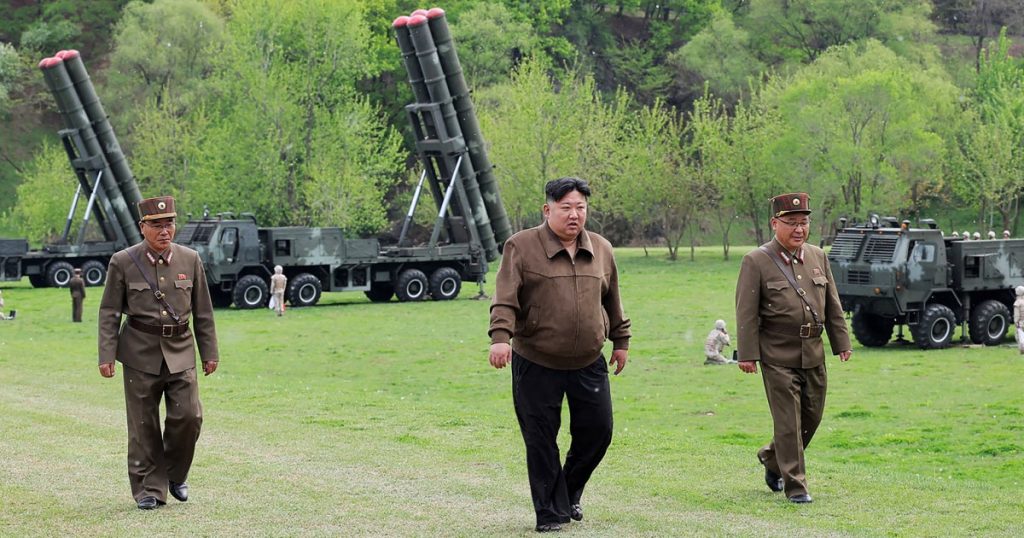North Korean leader Kim Jong Un supervised the launch of the country’s “super-large” multiple rocket launchers that simulated a nuclear counterattack against enemy targets, according to state media reports. The launch comes amid escalating tensions in the region and follows the firing of multiple short-range ballistic missiles towards eastern seas from near Pyongyang. These large-sized artillery rockets have characteristics of both artillery systems and ballistic missiles, with the capability to deliver tactical nuclear warheads.
The North Korean state media’s report described Monday’s launches as a demonstration of the country’s nuclear weapons management and control system, called “Haekbangashoe,” or “nuclear trigger.” The drill aimed to showcase the strength and attack capabilities of North Korea’s nuclear forces amid deepening tensions with the United States and South Korea. Kim expressed satisfaction with the drill, emphasizing the importance of preparing the nuclear force to deter and initiate a war in any situation. The use of multiple rocket launchers reflects North Korea’s escalatory nuclear doctrine, empowering the military to launch preemptive nuclear strikes if necessary.
The rocket launches flew approximately 218 miles before hitting a target island, demonstrating the system’s reliability and accuracy. South Korea’s Joint Chiefs of Staff reported that the weapons traveled about 185 miles before landing in waters between the Korean Peninsula and Japan, suggesting they were intended for South Korean targets. As the United States and South Korea conducted joint military exercises aimed at enhancing their response capabilities against North Korean threats, concerns arose about North Korea’s claims regarding the accuracy and potential export of its rocket launchers to Russia.
North Korea has accelerated its weapons testing in recent months, seeking to bolster its military capabilities while diplomatic efforts with the United States and South Korea remain stalled. The goal is to pressure the U.S. to recognize North Korea as a nuclear power and negotiate economic and security concessions from a position of strength. In response, the U.S. and South Korea have intensified their military drills and alliances with Japan, developing nuclear deterrence strategies involving strategic U.S. assets.
Experts note that while North Korea currently possesses nuclear missiles capable of targeting South Korea and Japan, it has yet to develop functioning intercontinental ballistic missiles that could reach the continental United States. Recent missile tests by North Korea have included a “super-large” cruise missile warhead, a new anti-aircraft missile, and a solid-fuel intermediate-range missile with hypersonic warhead capabilities. These tests highlight North Korea’s efforts to advance its missile technology and extend its targeting capabilities, including remote targets in U.S. Pacific territories like Guam.


